Reviews
Robert Sparr
USA, 1969
Credits
Review by Cullen Gallagher
Posted on 08 July 2011
Source Amazon Instant Video
Categories Vincent Price
Released in 1969, Robert Sparr’s More Dead Than Alive was made at a time in which the Western was undergoing severe revisions, not only on-screen, but also on the page and in the national consciousness. The public imagination was moving away from the heroic mythology of yesteryear and exploring the grittier, darker side of American history. Compared to contemporaneous Westerns, More Dead Than Alive is decidedly less profound or provocative—but that doesn’t mean its any less a product of its time. For one thing, Sparr’s film doesn’t reflect the revolutionary spirit of the American Indian Movement protests of the 1960s, nor does it prescribe to the alternate histories published by Dee Brown in the 1950s and 1960s (his seminal Bury My Heart At Wounded Knee was still one year away from being published). And while it borrows stylistic devices from Sergio Leone’s Spaghetti Westerns and partakes of the same demythologization of Sam Peckinpah’s 1962 film Ride the High Country, Sparr is nowhere near as groundbreaking as his influences. However, all of these cultural forces seem to be at work in More Dead Than Alive. Not only does it revel in excessive brutality as only a B-picture could, but it also aspires to dispel the legend and lore of the Old West, to rub off the varnish and show its true colors. The gunfighter isn’t valorized, but instead humanized in the most unromantic way: he’s just someone who feels less guilty about pulling the trigger than the other guy.
The film begins with a stylish but unnecessary 15-minute jailbreak scene that ends in a huge massacre. Sparr’s tracking shots [move] through the gallows and the jail yard are some of the most visually stunning moments of the film. But, as awesome as the shoot-out between the prisoners and the guards may be, it serves little purpose except to introduce the main character. Out of all the inmates, the only one who doesn’t fight is “Killer” Cain (Clint Walker), the notorious gunfighter who has decided to put down his irons for good.
When his 18 years are up, Clint is released, but he finds the world is unable to forgive - or forget - his past. The only one willing to give him a job is Dan Ruffalo (Vincent Price), who runs a traveling gunshow starring a young hotshot named Billy Valance (Paul Hampton). At first, Valance is awed by Cain’s history, but unlike his fallen compatriots (Jesse James, Billy the Kid), Cain lived to see his draw diminish and his attitude mellow. Soon, Valance’s admiration turns to rivalry, as Ruffalo makes Cain the star of the show and Valance merely a side attraction. Wanting to prove that he is better the legends he admires, Valance keeps edging Cain closer and closer to a duel.
The conversations between Cain and Valance are the most thematically interesting material in the film. Their discussions are a discourse in Western historiography:
VALANCE
You make it sound lousy.CAIN
It was.VALANCE
Hell, I just wish I had been living in those days, because the way I handle a gun…boy, I’ll tell ya.CAIN
The way you handle a gun you’d have been a dead man. Somebody would have shot you in the back because they were afraid to face up to you. That’s the way it was and don’t you think different.
As much as Cain doesn’t fit into the modern world, he doesn’t long for the old days. To the rest of the world, he’s just another relic like the other mementos in Dan Ruffalo’s caravan. However, unlike the phony guns and bullets that supposedly wrote the history of the West in blood, “Killer” Cain is the real deal. And Ruffalo - and the world - won’t let Cain forget it, no matter how hard he tries. The West was once a place one went to escape one’s past and to start a new life. That Wild West, however, is long gone, and with it all its promises of renewal and freedom. This, like the gunfighter, is another myth that More Dead Than Alive puts under six feet of dirt.
Of the performances, Clint Walker is quite good as the solemn, soft-spoken gunfighter, Anne Francis is likeable as the artist who tries to help Cain go straight (though one wishes her part had been fleshed out more), and Paul Hampton strikes that right balance of immaturity and psychosis that his character calls for. The best performance, however, belongs to Vincent Price, who plays the sideshow barker with panache and gusto. His inimitable drawl is perfect for bawling out ballyhoo, and his wild eyes and exaggerated facial expressions nail the incessant scheming of a true con artist. As for director Robert Sparr, More Dead Than Alive was only his second feature. An active television director, Sparr would only complete one more film (1969’s Once You Kiss a Stranger) before dying in a plane crash while scouting locations for an upcoming project. Certain sequences (such as the opening) showed promise, but overall the film lacked the punch and individuality of a mature craftsman, something Sparr never lived or worked long enough to become.
More Vincent Price
-
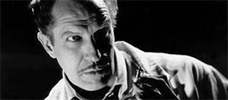
The Tingler
1959 -
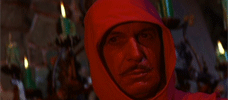
The Masque of the Red Death
1964 -
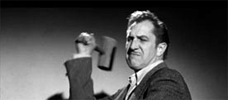
The Last Man on Earth
1964 -
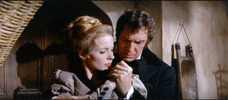
The Tomb of Ligeia
1964 -
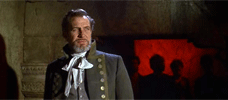
War-Gods of the Deep
1965 -
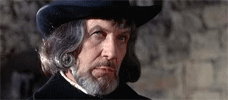
Witchfinder General
1968 -
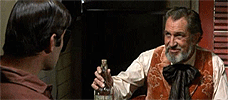
More Dead Than Alive
1969 -
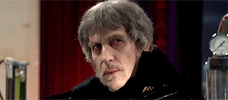
The Abominable Dr. Phibes
1971 -
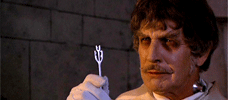
Dr. Phibes Rises Again!
1972 -
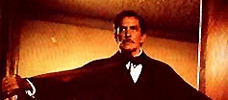
Theatre of Blood
1973
We don’t do comments anymore, but you may contact us here or find us on Twitter or Facebook.



